One way to find new cultivars as well as learning about the plant kingdom more widely, is to search for Teal flowers by their color. One color that always arises in the summer is Teal. Teal flowers is a deep shade of blue that is slightly green in its hue.

You might be searching for a specific color to match some new flowers you have bought, want to experiment with non conventional colors, or just have a gap in your border you want to fill with something specific.
Either way, you will find you will learn a lot about flowers by searching for color rather than just buying what’s on offer at the local farmers market – sometimes independent research is rewarding as well as effective.
Alphabetical lists are one way, but searching via color can raise awareness to flowers that may not get the appreciation they deserve, and can open up a world of the more rare and unique flowers and cultivars open to our use.
Teal reminds us of the summer holidays where you would spend your whole day turning into a prune in the sea, or scuba diving down into the tropical coral reefs off some mediterranean island.
Whether it’s your Mai Tai or just the shade of the sky on a late afternoon – Teal is certainly a color worth exploring in the flowering plants of the world.
RELATED: 18 Beautiful True Blue Flowers (Including Pictures)
1. Geranium ‘Rozanne’
Geraniums are a common sight in the English garden and the cottages of the world. Not only are they easy to grow and have a good flowering period, but this cultivar has particularly beautiful flowers that are stunning among the green foliage of your garden.
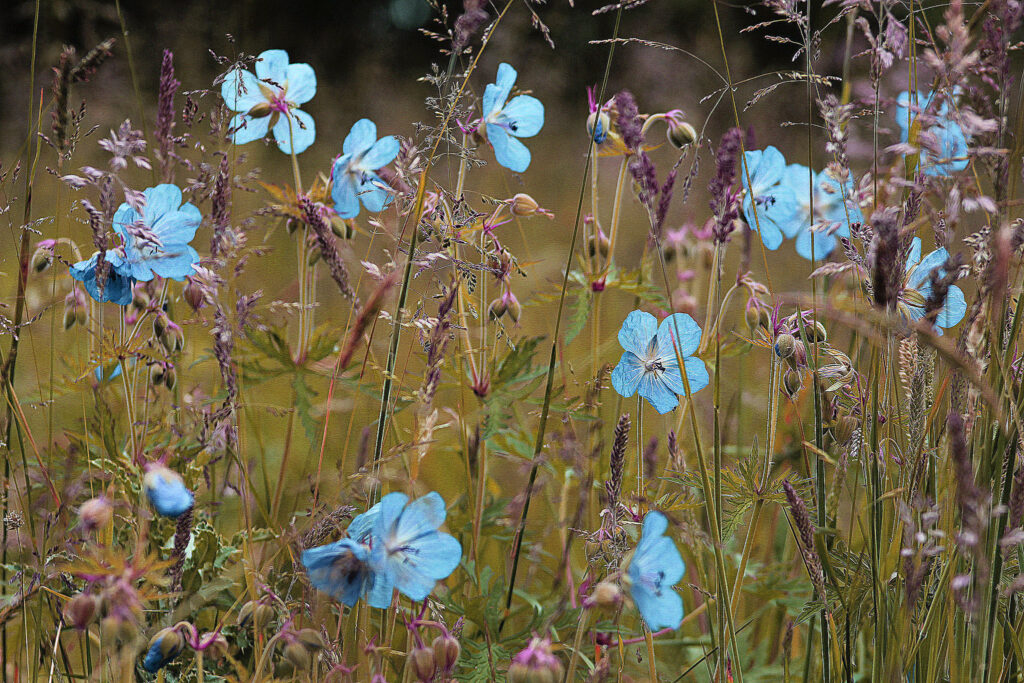
After their original period you can cut the flowers back quite harshly and they have the potential to have a second flowering.
So not only are Geraniums a worthwhile pursuit that can bear reward for the whole season, but this cultivar is particularly quaint. The teal shade of the flower brings a welcome flush of fresh blue into your garden.
Among other tropical colors the teal can really stand out and represent the sea. The geranium is a great flower to display this color as it is relatively small and is subtly complex rather than baudy and showy.
2. Aster X Frikartii ‘Mönch’
This unassuming cultivar displays some truly deep a colorful teal color in combination with its green foliage and stems. The teal petals surround a golden sunny disc in the centre of the flower head.
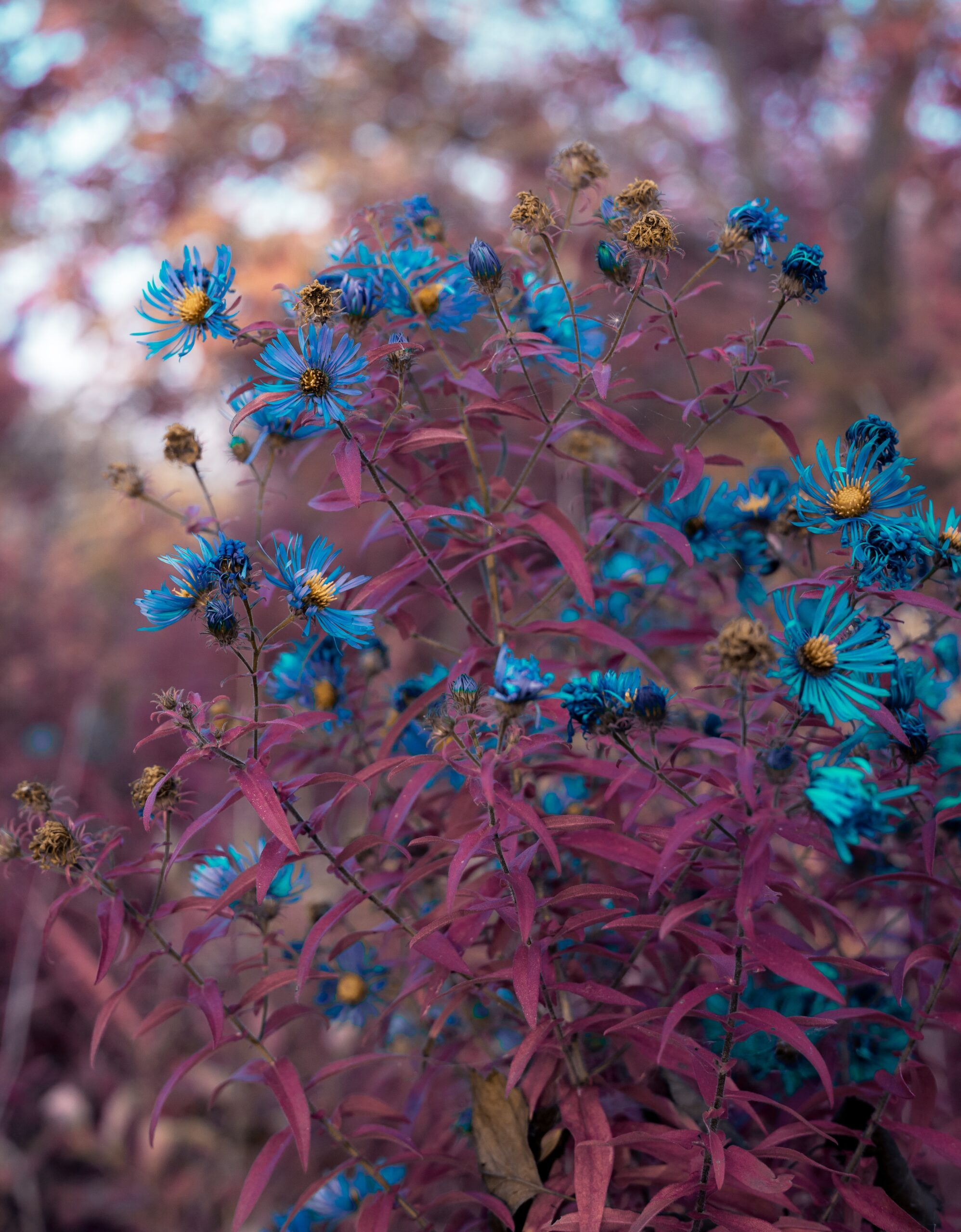
The petals are thin and long but, as the herbaceous perennial often has many flowers per stem, they look enchanting when cumulatively working together.
This works well in borders and beds and the Aster is particularly long lasting and should reappear year by year under the right care. It’s no surprise this daisy-like show flower has gained awards for its beauty.
The merit lies in the ocean blue of the petals which can bring the aquatic vibe to your bed or border that you seek. These flowers really give off some summer freshness in your garden.
3. Pennisetum Alopecuroides ‘Hameln’
While flowering grass might not seem like the obvious option, this can be a left of field choice that could show your nuance when it comes to gardening and landscaping.
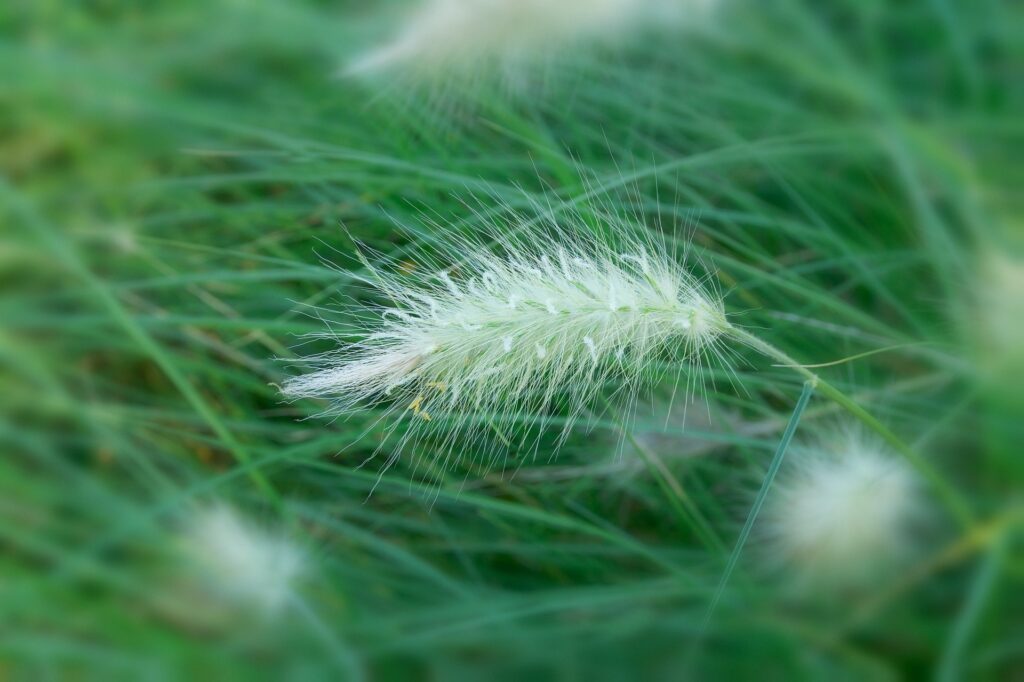
The pennisetum flowers during the late summer and into early fall, but can be cut back to a grass during the colder months.
Still a flowering perennial, the long lasting flowers occur in the late summer and look like cute little blue squirrel tails. In the summer wind these can blow around and look majestic on their thin and flexible stems.
Most people don’t expect grasses to be that good looking, but this plant’s shades of blue are nothing to be sad about, they are particularly good looking as the sun goes down over your garden.
They even look great in a bouquet and show you have a knowledge of other flowering plants beyond your generic rose.
For a different kind of inflorescence, a plant you can count on to flower every year, and a little bit of a different gardening challenge than your normal perennial flower, there is a lot to gain from the pennisetum.
4. Phlox Paniculata ‘Blue Paradise’
For a more conventionally beautiful flower then look no further than the Phlox. As the species suggest, multiple beautiful flower heads emerge from the panicles as the summer draws on.
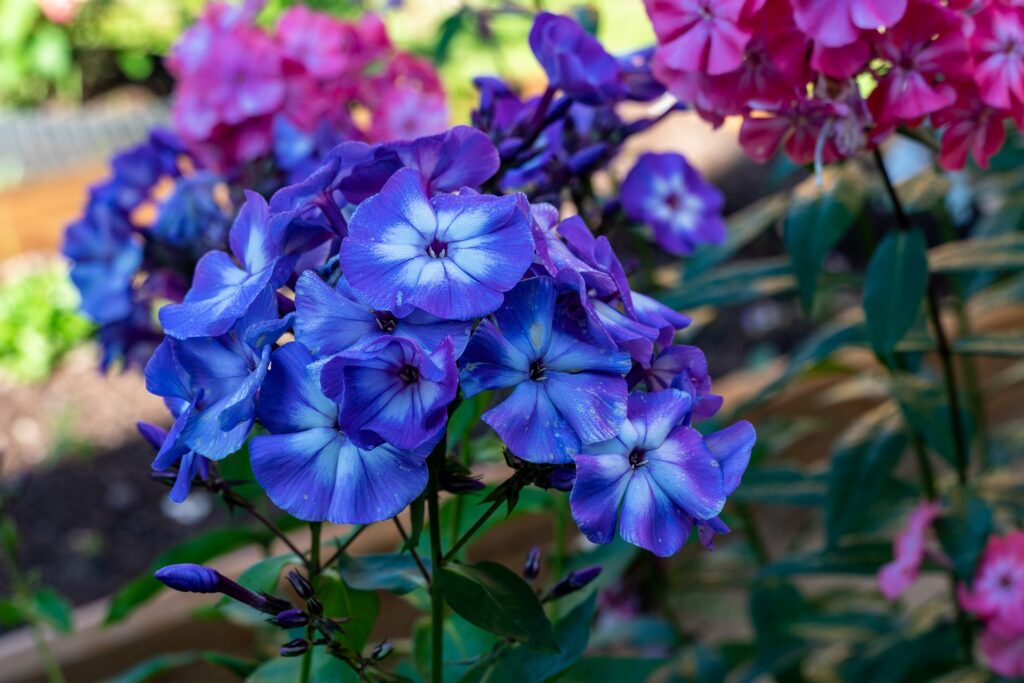
These flowers bloom through into the late summer and even the early fall month of September.
The panicles make them ideal for bouquets as there is usually a long strong stem that splits into a panicle and the multiple flower heads. More than just their enjoyable flowering period, the Phlox has the ability to bring a lovely light floral scent to your bouquets or garden.
The flowers are intricate and beautiful in their morphology, they often have five petals which are quite broad and bloom into a flat surface. The petals themselves are a fantastical shade of blue and have a centre that is deep purple as the petals converge.
The combination of these morphological differences create a unique texture to the wholistic shade of blue that the flower shows off majestically.
5. Agapanthus ‘Charlotte’
Agapanthus are similar to Phlox, but their inflorescence is a little different and could be desirable in certain situations. Their flower head is a little more similar to a lily, they are colloquially known as the ‘lily of the Nile’, or the African Lily.
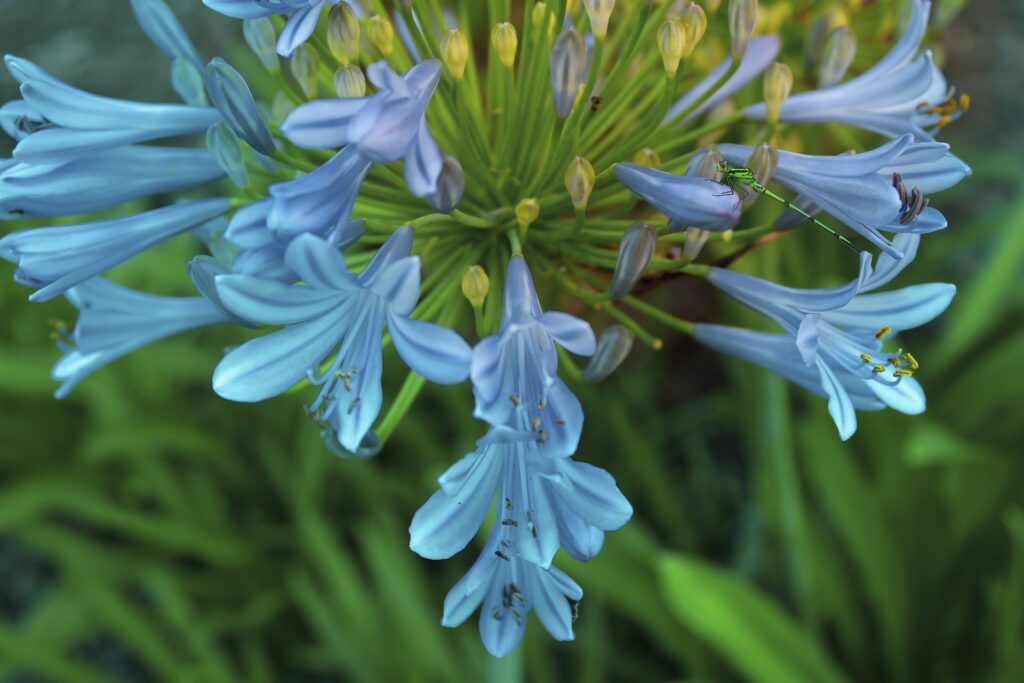
Like a Phlox, long strong panicles spread into clusters of multiple flowers, their flower head similar to that of a lily, much more cupped and spreading.
Each petal has a sort of seam of color down the centre of the petal that is a dark blue, while the main part of the petal is a light and misty shade of blue.
Together these two, in combination with the fresh green stem, come together to create a real teal vieb that is great during summer for some cooling colors and freshness.
The Agapanthus is compatible with the growing conditions of many other flowers, so will grow great with other flowers in a bed or border.
RELATED: 17 Gorgeous Flowers That Start With A (Including Pictures)
Just like the Phlox, this cultivar can be cut at the stem and is a great way to get different kinds of inflorescence into a bouquet – just don’t eat it; their internal parts are toxic!
6. Salvia Sagittata ‘Blue Butterflies’
From high in the Andes, these beautiful salvia flowers can bring some blue bright colors straight into your garden this summer. The salvia plant is often overlooked for its floral beauty, as it is actually a close cousin of the herb sage.
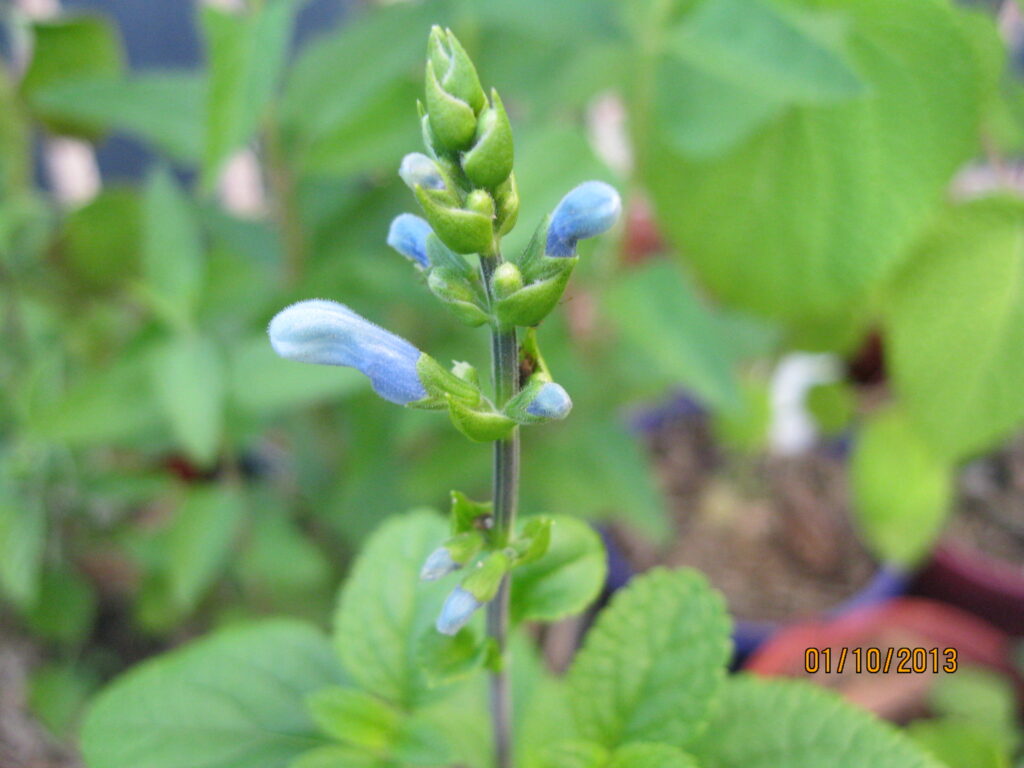
However, sage is a great way to bring some bold colors to end the summer and transition into the beauty of fall. The shades of blue change as the summer draws on and flowers bloom until around October when well maintained.
This particular cultivar does its name justice as the blue color of the inflorescent salvia looks exactly like a flock of blue butterflies floating on the summer breeze. Salvia’s petals are quite unique and are often singular but wrap around the flower head and look like many.
Ironically, the flowers do look like butterflies but you will get many actual real butterflies visiting this plant too, so it is great for those who want to accommodate our little pollinators.
The Final Word
As you can see there are many flowers that can display shade of teal, in combination with the green foliage so common among plants, the blue flowers will marry together with fresh foliage to make a truly stunning teal display.
If you really want to make the blue flowers in your garden really stand out, look no further than its own independent border or bed. This can show a variety of knowledge of both botany but also the array of colors and cultivars within the horticultural world.
This said, a blue bouquet would show off your prowess similarly. Blue is great for a whole array of occasions such as baby showers, even a mardi gras bouquet, and more importantly when you are getting married you always need something blue!
Make your next wedding memorable for the bride and groom with a gloriously blue bouquet to welcome their marriage.
Blue is a relatively rare color that occurs naturally in nature, like the color teal, most blue colors could have some green hue to them as chlorophyll makes green a very accessible color. Moreover, the greens of the foliage will marry with the blue flowers to create a teal appearance.
From your common Geranium to the flowering grass Pennisetum, finding flowers that are blue can be a struggle but is a rewarding experience that can expose you to a whole host of flowers you may never have heard of before.
Searching through the flower kingdom by color can be an interesting way to learn about flowers in a wider sense. These encyclopedic lists are helpful ways to approach horticultural learning and are accessible for both plant experts and newcomers to the field of gardening.
We hope you learned something from this article, here are other articles that you can learn from:
Dahlias: Key Steps and Tips on Growing Dahlias In Pots







